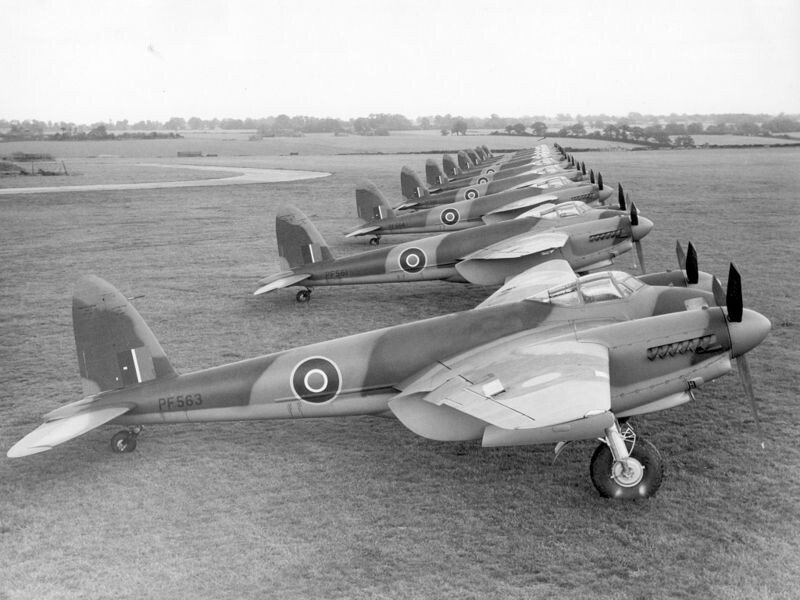#britain
The story of the Mosquito begins with the founding of Geoffrey de Havilland’s aircraft company which bore his namesake, de Havilland. Around 1908, de Havilland designed his first aeronautical engine, which he then used to power his first aircraft — a small biplane. In 1920, when the aircraft company he worked for — Airco — shut down, he was able to create his own company, de Havilland Aircraft Company Limited, more commonly known as de Havilland.
The Archer was one of the most unusual tanks of World War II, developed and produced by Britain. It was based on the chassis of the Valentine infantry tank and armed with the 17-pounder anti-tank gun. What made the Archer unique was that its gun faced the rear of the vehicle, meaning the tank often had to be reversed into firing position. Approximately 665 units were built.
The Hornet is a British single-seat two-engine heavy fighter developed by de Havilland as a successor to the iconic Mosquito. Entering service in 1946, it had outstanding performance for a piston-engine aircraft. However, it was too late to fight in WW2 and was doomed to be outclassed by jet-powered fighters in the new era of aviation. Nevertheless, the plane participated in the so-called Malayan Emergency as a ground striker. In this article, we will look at the Hornet’s characteristics, playstyle, and how to use it properly.
The Supermarine Spitfire is one of the most famous propeller aircraft ever made, and easily one of the best of its time. Initially a high performance, short range interceptor, the Spitfire could be found fighting in every theatre of the World War II. In War Thunder, its high speeds, unparalleled maneuverability, and heavy armament make it a pleasure to fly and a force to be reckoned with. In this article, I will be talking about the two main types of Spitfires, their strengths and weaknesses, as well as tactics, how to fight common enemies, and how to use this plane in battles.
If someone mentions bomber aircraft, chances are a lot of people — particularly Britons — will immediately think of the Lancaster. It was so ubiquitous and performed so many unique and famous actions, that it will always be remembered as one of the most successful bomber designs of the Second World War.
The Churchill or A22 was a British heavy infantry tank named after British Prime Minister Winston Churchill. It was used by Allied troops during World War II from 1942 onward and, in small numbers, by the Soviet Union. The vehicle remained in use until the Korean War. A total of more than 5,640 units were produced in various versions and modifications.
The A13 series of tanks was a range of similar British cruiser tanks produced just before, and for the first few years of, the Second World War. They adhered almost single-mindedly to the doctrine of speed and mobility above all else, meaning they were quickly outclassed by newer designs on both sides. Despite this they had a strong impact on the development of British tanks for several years and were a mainstay of the British Army’s tank units in the opening years of the war.
The Blackburn Buccaneer was a British carrier-borne, high-speed, low-level strike aircraft, designed by Blackburn Aircraft in the 1950s for the Royal Navy in response to the USSR’s Sverdlov-class ships. 209 planes and 2 prototypes were ever created.
In War Thunder, the Churchill Crocodile is generally considered a bit of an oddball as its signature flamethrower is useless against the vast majority of opponents it faces. However, on the battlefields of Western Europe in the 1940s, it was anything but funny for those soldiers unlucky enough to fight against a unit equipped with these armoured dragons.









